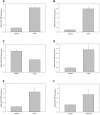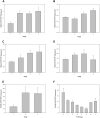Aberrant DNMT3B7 expression correlates to tissue type, stage, and survival across cancers
- PMID: 30071066
- PMCID: PMC6072033
- DOI: 10.1371/journal.pone.0201522
Aberrant DNMT3B7 expression correlates to tissue type, stage, and survival across cancers
Abstract
Cancer cells are known for aberrant methylation patterns leading to altered gene expression and tumor progression. DNA methyltransferases (DNMTs) are responsible for regulating DNA methylation in normal cells. However, many aberrant versions of DNMTs have been identified to date and their role in cancer continues to be elucidated. It has been previously shown that an aberrant version of a de novo methylase, DNMT3B7, is expressed in many cancer cell lines and has a functional role in the progression of breast cancer, neuroblastoma, and lymphoma. It is clear that DNMT3B7 is important to tumor development in vitro and in vivo, but it is unknown if expression of the transcript in all of these cell lines translates to relevant clinical results. In this study, a bioinformatics approach was utilized to test the hypothesis that DNMT3B7 expression corresponds to tumor progression in patient samples across cancer types. Gene expression and clinical data were obtained from the Genomic Data Commons for the 33 cancer types available and analyzed for DNMT3B7 expression with relation to tissue type in matched and unmatched samples, staging of tumors, and patient survival. Here we present the results of this analysis indicating a role for DNMT3B7 in tumor progression of many additional cancer types. Based on these data, future in vitro and in vivo studies can be prioritized to examine DNMT3B7 in cancer and, hopefully, develop novel therapeutics to target this aberrant transcript across multiple tumor types.
Conflict of interest statement
The authors have declared that no competing interests exist.
Figures



References
-
- Lifetime Risk of Developing or Dying from Cancer [Internet]. Atlanta: American Cancer Society [cited 29 May 2018]. https://www.cancer.org/cancer/cancer-basics/lifetime-probability-of-deve...
-
- Esteller M. Epigenetic gene silencing in cancer: the DNA hypermethylome. Hum Mol Genet. 2007; 16 Spec No: R50–59. - PubMed
-
- Bestor TH. The DNA methyltransferases of mammals. Hum Mol Genet. 2000; 9: 2395–2402. - PubMed
-
- Okano M, Bell DW, Haber DA, Li E. DNA methyltransferases Dnmt3a and Dnmt3b are essential for de novo methylation and mammalian development. Cell. 1999; 99: 247–257. - PubMed
Publication types
MeSH terms
Substances
LinkOut - more resources
Full Text Sources
Other Literature Sources

